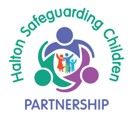Exercise & Activity
Children and young people who are physically active have better general health, stronger bones and muscles, and higher levels of self-esteem. However, the amount of physical activity children need depends on their age.
Recommendations for Children Ages 3 Through 5 Years
- Be physically active throughout the day for growth and development.
- Adult caregivers should encourage children to be active when they play.
Recommendations for Children Ages 5 Through 18 Years
According to the NHS, to maintain a basic level of health, children and young people aged 5 to 18 should:
- Aim for an average of at least 60 minutes of moderate or vigorous intensity physical activity a day across the week.
- Take part in a variety of types and intensities of physical activity across the week to develop movement skills, muscles, and bones.
- Reduce the time spent sitting or lying down and break up long periods of not moving with some activity. Aim to spread activity throughout the day.
- Children and young people should also reduce the time they spend sitting for extended periods of time, including watching TV, playing computer games, and travelling by car when they could walk or cycle.
What counts as moderate activity?
Moderate intensity activities will raise your heart rate, and make you breathe faster and feel warmer. One way to tell if you’re working at a moderate intensity level is if you can still talk, but not sing.
On a scale of 0 to 10, where sitting is a 0 and the highest level of activity is a 10, moderate-intensity activity is a 5 or 6. When children do moderate-intensity activity, their heart beats faster, and they breathe much harder than when they are at rest or sitting. Vigorous-intensity activity is a level 7 or 8. When children do vigorous-intensity activity, their heart beats much faster than normal, and they breathe much harder than normal.
Children and young people should do a range of different activities across the week.
Examples include:
- walking to school or walking the dog
- playground activities, including jumping, running, and catching.
- physical education
- sports, like football or tennis
- swimming
- skipping
- dancing
- skateboarding or rollerblading
- cycling
What activities strengthen muscles and bones?
Examples include:
- gymnastics
- football
- jumping
- martial arts
- sit-ups, press-ups, and other similar exercises (for young people)
- resistance exercises with exercise bands, weight machines or handheld weights (for young people) *
* Young people can use weights for resistance exercise if a qualified adult trains them to use weights correctly and supervises them.
Exercising safely
Children and young people should:
- get medical advice about exercising if they have a health condition.
- do exercise that is suitable for their age, ability, and experience.
- start any new exercise slowly and increase it bit by bit.
- use protective equipment, for example for cycling and skateboarding.
- Physical activity guidelines for children under 5 years
- Physical activity guidelines for adults aged 19 to 64
- Physical activity guidelines for older adults (aged 65 and over)
- GOV.UK has infographics on physical activity for children and young people
- Benefits of exercise
- Why we should sit less
- Find ways to encourage children to participate in activities that are age-appropriate, enjoyable, and offer variety.
- Examples of what counts as exercise: aerobic, muscle-strengthening, and bone-strengthening activity for children and adolescents.
- See how, school-based physical activity can help children meet the recommended 60 minutes of daily physical activity.
- How can you help children get the recommended amount of physical activity? Find out here.


